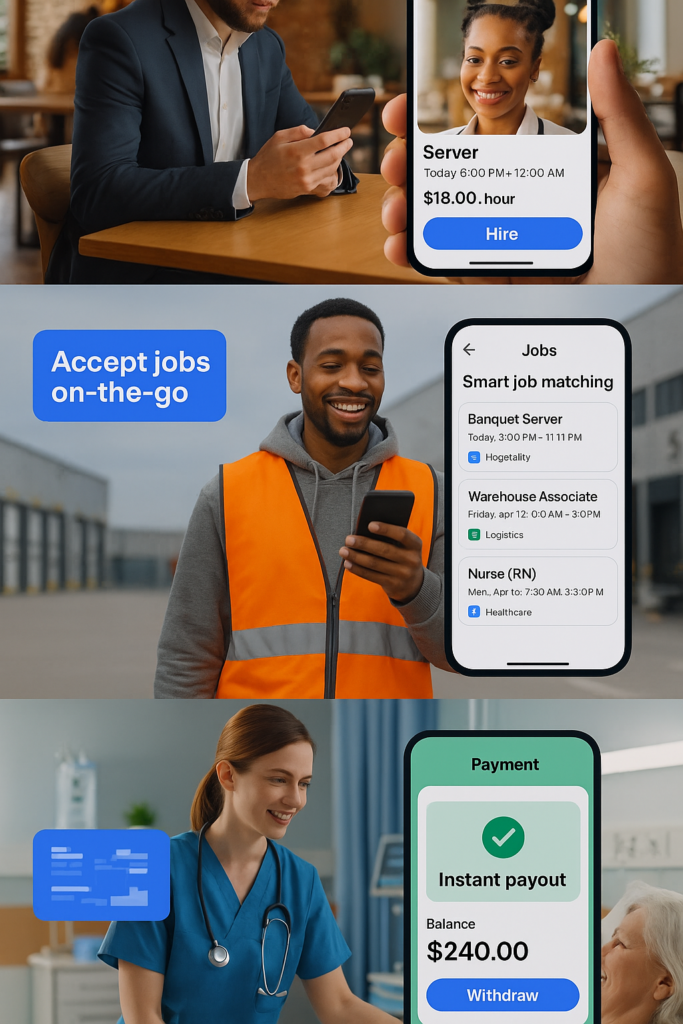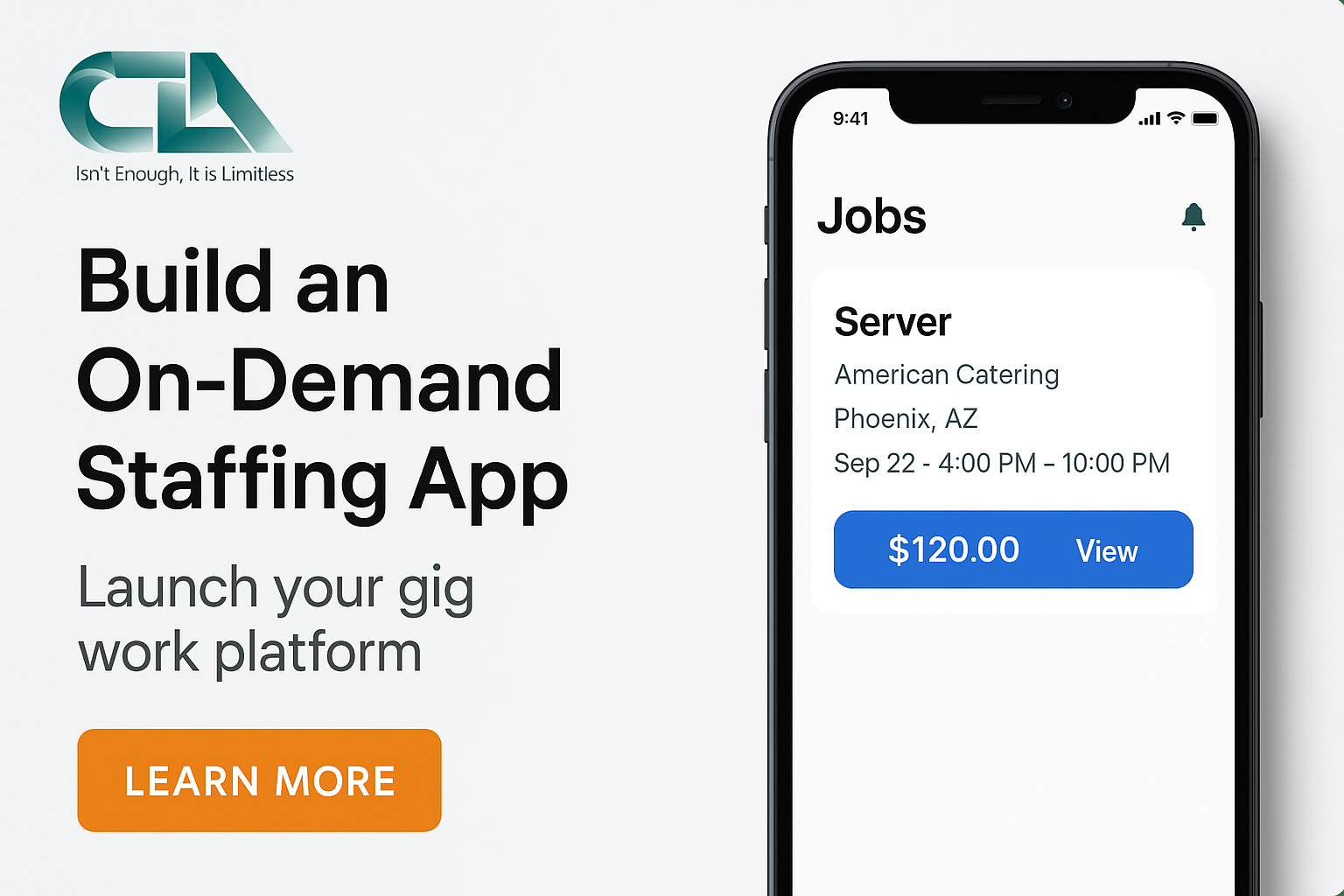In today’s fast-paced economy, flexibility and immediacy are critical. Traditional staffing models with long recruitment cycles can’t keep up. Enter the on-demand staffing app—a digital solution that connects businesses with vetted workers instantly.
Two major players in this space, Qwick and Wonolo, have transformed how industries like hospitality, warehousing, and events approach staffing. In this post, we explore how these platforms work and how you can build one yourself.
What is an On-Demand Staffing App?
An on-demand staffing app is a digital marketplace that connects temporary workers with businesses needing help for short-term or same-day jobs. It replaces staffing agencies with a real-time, tech-driven process.
Key Industries Benefiting:
- Hospitality (restaurants, hotels, catering)
- Warehousing & Logistics
- Events and Promotions
- Retail
- Healthcare
Qwick vs. Wonolo: Market Leaders
Qwick
Qwick focuses on the hospitality sector—connecting freelance workers like bartenders and cooks with short-term jobs. It offers same-day payments and skill-based vetting.
Core Features:
- Real-time shift matching
- Instant post-shift payments
- Scheduling dashboard for employers
Wonolo
Wonolo caters to warehousing, delivery, and retail industries, offering flexibility and performance-based matching for employers and workers.
Core Features:
- AI-based job matching
- Background checks and compliance
- In-app communication

Must-Have Features for Your Staffing App
- Two-Sided Interface: Worker profiles, availability, employer dashboards
- Smart Matching Algorithm: Skill and availability-based job matching
- Shift Management: Clock-in/out, notifications, shift status
- Real-Time Notifications: Job offers, updates, payments
- Integrated Payments: Stripe, PayPal, direct deposit
- Rating & Vetting System: Trust-building through reviews
- Geo-location Matching: Nearby job discovery
- Admin Panel: Reports, user control, dispute handling
Technology Stack
Frontend:
- React Native / Flutter (Mobile)
- React.js / Vue.js (Web)
Backend:
- Node.js / Laravel / Django
- Database: PostgreSQL / MySQL
Third-party APIs:
- Google Maps API (geo-location)
- Stripe or PayPal (payments)
- Twilio, SendGrid (notifications)
- Checkr, Onfido (background checks)
Revenue Models
- Commission per completed shift
- Subscription Plans for businesses
- Featured Listings and job boosts
- Service Fees per transaction
Challenges to Expect
- Reliability: Handle no-shows and late check-ins
- Compliance: Tax rules and labor law adherence
- Scalability: Expand to multiple cities or regions
- Trust: Ensure vetting and quality assurance
Final Thoughts
The gig economy is growing fast, and on-demand staffing apps are at its core. Platforms like Qwick and Wonolo have proven the model works—offering businesses flexibility and gig workers freedom.
If you’re planning to build an on-demand staffing app, focus on real-time UX, trust, and scalability. With the right tech partner, you can bring your staffing idea to life and tap into a booming market.
Need help launching your staffing platform? Contact us to discuss your vision and make it a reality.
